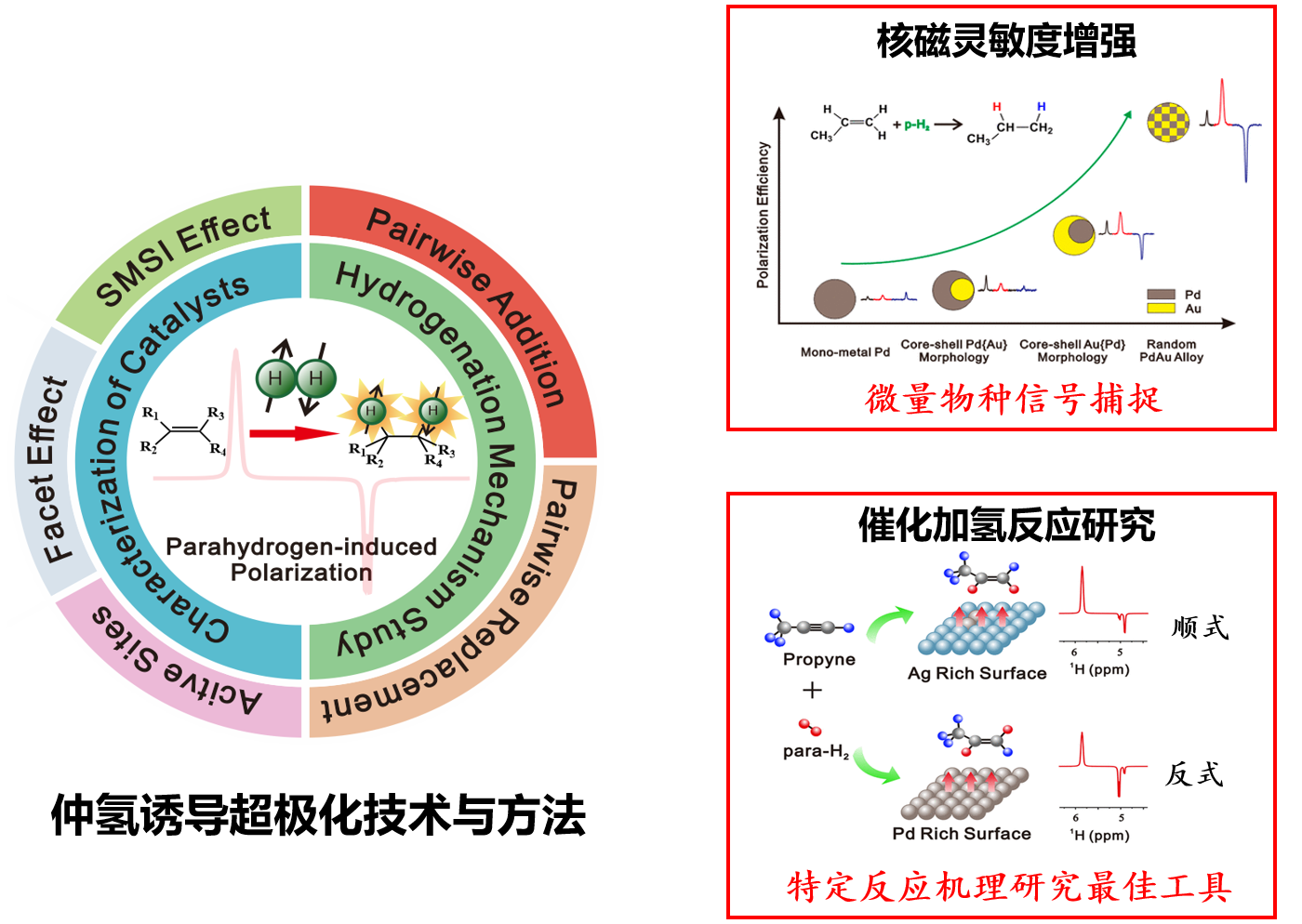Hyperpolarization NMR Technique and Applications
To address the inherent low sensitivity of NMR, the focus is on the development of parahydrogen-induced polarization (PHIP) and dynamic nuclear polarization (DNP) techniques. These techniques disrupt the Boltzmann distribution of spin nuclei at thermal equilibrium, resulting in several orders of magnitude enhancement in NMR signal intensity. This significant improvement facilitates highly sensitive structural characterization of catalytic materials. When combined with in situ NMR technology, these hyperpolarized methods enhance the signals of low-concentration reaction species, such as intermediates and products, enabling polarized observation of catalytic reactions under actual operating conditions. This integration allows for deeper insights into reaction mechanisms and catalyst performance in real-time.

1. W. Wang; R. J. Lewis; B. Lu; Q. Wang; G. J. Hutchings; J. Xu; F. Deng, The Role of Adsorbed Species in 1-Butene Isomerization: Parahydrogen-Induced Polarization NMR of Pd–Au Catalyzed Butadiene Hydrogenation. ACS Catal. 2024, 14, 2522-2531.
2. W. Wang; Q. Wang; J. Xu; F. Deng, Understanding Heterogeneous Catalytic Hydrogenation by Parahydrogen-Induced Polarization NMR Spectroscopy. ACS Catal. 2023, 13, 3501-3519.
3. W. Y. Wang; Q. M. Sun; Q. Wang; S. H. Li; J. Xu; F. Deng, Heterogeneous parahydrogen induced polarization on Rh-containing silicalite-1 zeolites: effect of the catalyst structure on signal enhancement. Catal. Sci. Technol. 2022, 12, 4442-4449.



